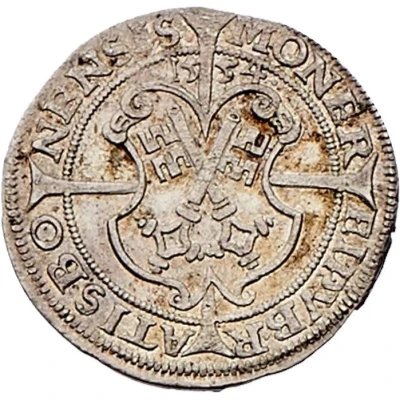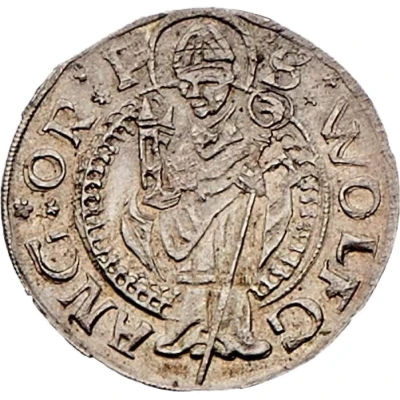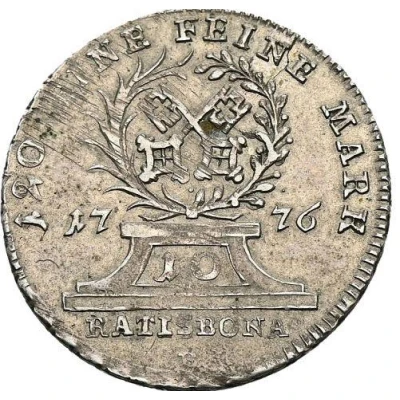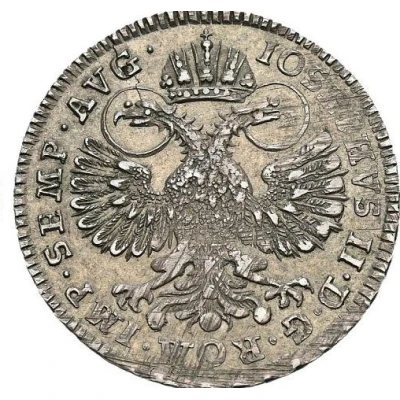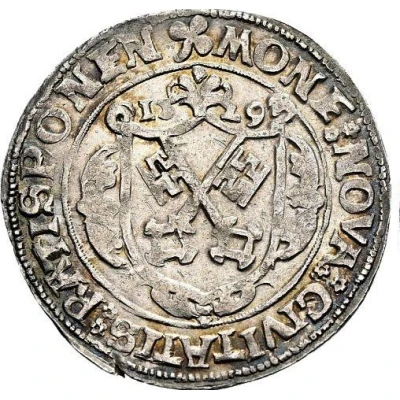
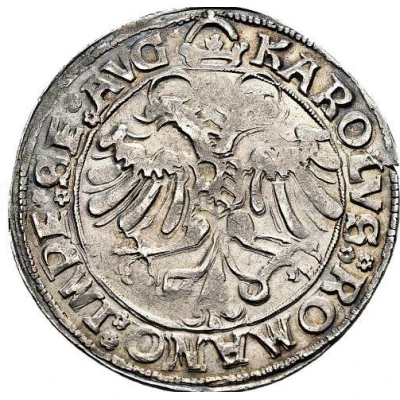

© Fritz Rudolf Künker GmbH & Co. KG, Osnabrück and Lübke & Wiedemann KG, Leonberg
10 Kreuzer
| Silver (.750) | 5.52 g | 28 mm |
| Issuer | Free city of Regensburg (German States) |
|---|---|
| Period | Free city (1245-1803) |
| Emperor | Charles V (Karl V) (1519-1558) |
| Type | Standard circulation coin |
| Years | 1527-1532 |
| Value | 10 Kreuzers (1⁄12) |
| Currency | Thaler |
| Composition | Silver (.750) |
| Weight | 5.52 g |
| Diameter | 28 mm |
| Shape | Round |
| Technique | Hammered |
| Orientation | Medal alignment ↑↑ |
| Demonetized | Yes |
| Updated | 2024-10-05 |
| Numista | N#266141 |
|---|---|
| Rarity index | 100% |
Reverse
Crowned imperial eagle, shield of Austria-Burgundy arms on breast
Script: Latin
Lettering: KAROLVS: ROMANO(RV): IMPE: SE: AV(G).
Interesting fact
One interesting fact about the 10 Kreuzer coin from the Free City of Regensburg is that it was minted during a time of great economic and political change in Europe. The coin was issued during the reign of Emperor Charles V, who was trying to standardize coinage across the Holy Roman Empire. The 10 Kreuzer coin was one of the first standardized coins issued by the Free City of Regensburg, and it was used widely in trade and commerce throughout the region. Despite its small denomination, the coin was made of silver, which gave it a high level of purchasing power at the time. Today, the 10 Kreuzer coin is a rare and valuable collector's item, highly sought after by numismatists and historians interested in the economic and political history of Europe during the 16th century.
